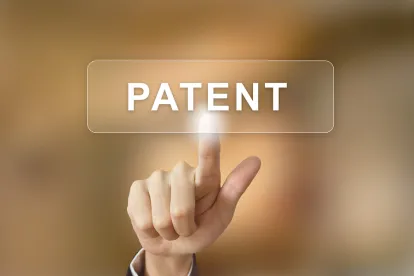Takeaway: The Board denied institution because the Board was unable to construe the claims because it was unable to determine what structure corresponded to the function of the means for limitation.
In its Decision, the board declined to institute inter partes review of the only challenged claim, claim 12, of the ’170 patent. The ’170 patent relates to a device that “determines at least one characteristic of electromagnetic radiation emitted from a test object.”
The Board began its analysis with claim construction, stating that because Petitioner had not identified the corresponding structure for the limitation, “means for pivoting one or more of the network of probes and the support,” as required by 37 C.F.R. § 42.104(b)(3), and the Board could not construe the limitation, the Board denied institution of an inter partes review of claim 12 of the ’170 patent. “A limitation using the term ‘means for’ creates a rebuttable presumption that the drafter intended to invoke 35 U.S.C. § 112 ¶ 6.” The “Rules specifically require that the petition identify the corresponding structure in proposing a construction for a means-plus-function claim limitation.” Further, the “structure disclosed in the specification is ‘corresponding’ structure only if the specification or prosecution history clearly links or associates that structure to the function recited in the claim.”
Both parties agreed that the “means for pivoting” limitation should be construed in accordance with 35 U.S.C. § 112 ¶ 6, but disagreed about the scope of the claimed function. Petitioner asserted that “[t]he ‘one or more’ language [of the means for pivoting limitation] unambiguously refers to the network of probes, namely that less than all of the probes may be moved.” Thus, Petitioner argued that the claimed function requires movement of the “network of probes and the support.” Patent Owner argued that the claimed function of this limitation is “pivoting the network of probes, the support, or both.” The Board determined that this dispute does not have to be determined to decide whether to institute, and stated that the claimed function “at least includes pivoting both the network of probes and the support, as urged by both parties.”
The Board then attempted to ascertain the corresponding structure for the function. Petitioner asserted several structures illustrated in Figure 1 as corresponding to the function of pivoting the support, and asserted several structures illustrated in Figure 2 as corresponding to the function of pivoting the network of probes. Patent Owner agreed with Petitioner’s proposed corresponding structures. However, the Board noted that “neither party expressly stated that the combination of structures disclosed in Figures 1 and 2 of the ’170 patent corresponds to the agreed-upon aspect of the claimed function – pivoting the network of proves and pivoting the support.” Specifically, the Board determined that the “Petition is deficient for failing to identify structure that corresponds to the full scope of the claimed function,” because Petitioner did not identify corresponding structure that performs the dual function of pivoting the network of probes and the support. Petitioner asserted that the “the patent never refers to Figures 1 and 2 as mutually exclusive ‘embodiments’” and rather that “it uses two figures to describe the operation of the two moving components.” However, silence alone is insufficient to “clearly associate” the combination of structures disclosed in Figures 1 and 2 as corresponding to the dual function.
The Board also noted that “even if we were to overlook the deficiency in [the] Petition, we are not persuaded that the ’170 patent Specification clearly associates the combination of separate structures disclosed in Figures 1 and 2 as corresponding to the claimed dual functions.” Patent Owner, in its Preliminary Response, contended that the Specification discloses an embodiment in which the support is pivoted, an embodiment in which the entire network of probes is pivoted, and that those embodiments may be combined. However, the Board determined that the disclosure of combined embodiments was referring to means that allow the relative tilting of the network of probes and of the support in the plane, without any mention of the structures disclosed in Figures 1 and 2, nor their combination. Further, the Board determined that the claim language itself does not indicate whether the limitation requires one means or the combination of separate means from separate embodiments. For at least the above reasons, the Board could not discern any corresponding structure for the claimed function of the “means for pivoting” limitation irrespective of which construction the Board adopts. Accordingly, the Board determined that Petitioner has not met its burden of showing a reasonable likelihood of prevailing in any of its challenges and that, on this record, the recitation “means for pivoting one or more of the network of probes and the support” cannot be construed.
ETS-Lindgren Inc. v. Microwave Vision, S.A., IPR2015-01048
Paper 6: Decision – Denying Institution of Inter Partes Review
Dated: October 26, 2015
Patent: 7,443,170 B2
Before: Rama G. Elluru, James B. Arpin, and Charles J. Boudreau
Written by: Elluru
Related Proceedings: Microwave Vision, S.A. et al. v. ESCO Technologies Inc. et al., Case No. 1:14-cv-01153-SCJ (N.D. Ga.)



 />i
/>i

